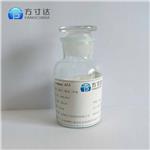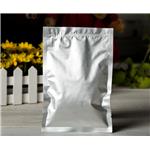Uses
Parylen AF
4 is extremely useful in high temperature applications and those in which long-term UV stability is required.
- Aerospace
- Military
- Electronic
- Medical
- Industrial
- Semiconductor (3D IC TSV electrical insulation , AMOLED De-bonding layer , Barrier layer )
- Bio-MEMS electrode protection film
- EWD (Electro Wetting Device) Liquid lens
Preparation
1,1,2,2,9,9,10,10-Octafluoro[2.2]paracyclophane is synthesised using 1,4-Bis(bromodifluoromethyl)benzene as a raw material by chemical reaction.
![1,1,2,2,9,9,10,10-Octafluoro[2.2]paracyclophane synthesis 1,1,2,2,9,9,10,10-Octafluoro[2.2]paracyclophane synthesis](/NewsImg/2024-05-07/6385069216580490693860029.png)
Application
1,1,2,2,9,9,10,10-Octafluoro[2.2]paracyclophane can be used:
(1) cross-coupling reactions. 4-iodo-1,1,2,2,9,9,10,10-octafluoro[2.2]paracyclophane is successfully coupled to a variety of arylboronic acids and boronic acid pinacol esters with the exception of sterically-demanding systems such as mesityl. Using the standard Suzuki method, dicyclophane containing two octafluoro[2.2]paracyclophane units separated by one and two benzene rings can be prepared.
(2) Spectroscopic studies. It is an isomer of 1-fluorocyclopropane and has a shorter reaction time compared to 1-fluorocyclopropane. The spectral properties of this compound are similar to those of 1-fluorocyclopropane. Its mass spectrum shows peaks corresponding to molecular ions with m/e=256 and its fragmentation pattern corresponds to monosubstituted aromatic hydrocarbons.
General Description
1,1,2,2,9,9,10,10-Octafluoro[2.2]paracyclophane is a synthetic chemical compound used in cross-coupling reactions. It is an isomer of the more common 1-fluorocyclopropane and has been shown to have a shorter reaction time than 1-fluorocyclopropane. The compound's spectroscopic properties are similar to those of 1-fluorocyclopropane. The compound was synthesized by reacting nitrobenzene with cyclopentadiene in the presence of boronic acids and aluminum chloride. The mass spectrum of this compound shows peaks corresponding to the molecular ion at m/e=256, and its fragmentation pattern corresponds to a monosubstituted aromatic hydrocarbon.
General Description
Characteristics of Parylen AF4 coating:
Specialties:
- Unmatched UV stability
- Excellent thermal stability at high service temperature (350)
- Unmatched oxidation stability
- Completely conformal coating
- Superior crevice penetration, pin hole free
- Anti-saline damage
- Anti-stick ion
Barrier properties:
- Chemical insolubility and solvent resistant
- Low water absorption
- Hydrophobic properties
- Low gas permeability , no out-gassing
Physical & mechanical properties:
- Transparent
- Light-weight and ultra-thin
- Low CTE
- Low coefficient of friction
- Good dry lubricity
- Abrasion resistance
- Stabilization of components and structures
- Particulate immobilization
Electrical properties:
- Electrical insulation
- High dielectric strength
- High volume resistivity ,ohm-cm
- Low dissipation factor
- Low dielectric constant
- Mitigation of tin whisker growth
Biocompatibility and bio-stability
- USP class VI
- Microorganism resistance
![1,1,2,2,9,9,10,10-Octafluoro[2.2]paracyclophane Structure](https://www.chemicalbook.com/CAS/GIF/3345-29-7.gif)
![1,1,2,2,9,9,10,10-Octafluoro[2.2]paracyclophane synthesis 1,1,2,2,9,9,10,10-Octafluoro[2.2]paracyclophane synthesis](/NewsImg/2024-05-07/6385069216580490693860029.png)


